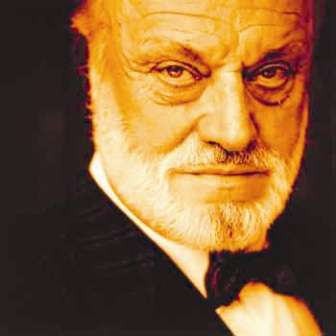|
Back
Pactice Made Perfect Cleveland
Severance Hall
04/21/2011 - & April 22, 23*, 2011
Felix Mendelssohn: The Hebrides Overture, Opus 26
Ludwig van Beethoven: Piano Concerto No.2 in B-flat Major, Opus 19
Johannes Brahms: Symphony No. 4 in E minor, Opus 98
David Fray (piano)
The Cleveland Orchestra, Kurt Masur (conductor)

K. Masur (Courtesy of CO)
Kurt Masur. Just the name brings to mind endless concerts of all kinds of music, and when I stopped to try to remember how many times Iíve seen the Maestro conduct, I lost count. Even so, it was a shock to be reminded that this great conductor is now 85 years, but he has lost not a bit of his deep connections to the music and the orchestra with which he is working. When the group was tuned and seated, out he came, in black slacks, a grey turtleneck and a rusty-brown smock, looking for all the world as if he was going to a rehearsal, slowly walking to the podium. He conducted without a score in both of the orchestral pieces and used only minimal music for the piano concerto.
In the Mendelssohn overture, we were able to hear each set of instruments as they painted the picture of the composerís impression of Fingalís Cave in Scotlandís Hebrides Islands. Maestro Masur kept his gestures to a minimum but was quite able to raise the dynamics and tempi when needed. The clarinetís brief section was especially nice.
The French pianist David Fray is just shy of 30 years old, but plays with a nonchalance of one much older. Seated on a high bench, his long legs tucked under the piano and forehead almost touching the keyboard, he ended the phrases with flourishes and a grin, clearly enjoying himself. Beethoven himself said that this concerto was ďnot one of (his) bestĒ, and although this playful piece is fun it isnít a show-off vehicle that impresses the audience with grand pyrotechnics. Since Mr. Fray made his U.S. debut with the Cleveland Orchestra, itís to be hoped that he will return again soon.

D. Fray (Courtesy of CO)
Brahmís last symphony, the 4th, has always remained popular. Itís rather staid in the dramatic first movement and the solemn second but in the bright and joyful C major third movement, with the bright piccolo and triangle ringing out over the rest of the orchestra, itís easy to hear where Erich Wolfgang Korngold, the scorer of swashbuckling films of the late 30s, found inspiration. The fourth movementís chaconne sequence was taken from the final movement of J.S. Bachís cantata, Nach dir, Herr, verlanget mich. In reclaiming themes from the past, Brahms left a model for later composers to utilize elements in new ways. Maestro Masur has an ability to become one with the music and the orchestra so one almost forgets that he is there. He leads with quiet authority and it was a rare privilege to get to witness this once again.
Suzanne Torrey
|